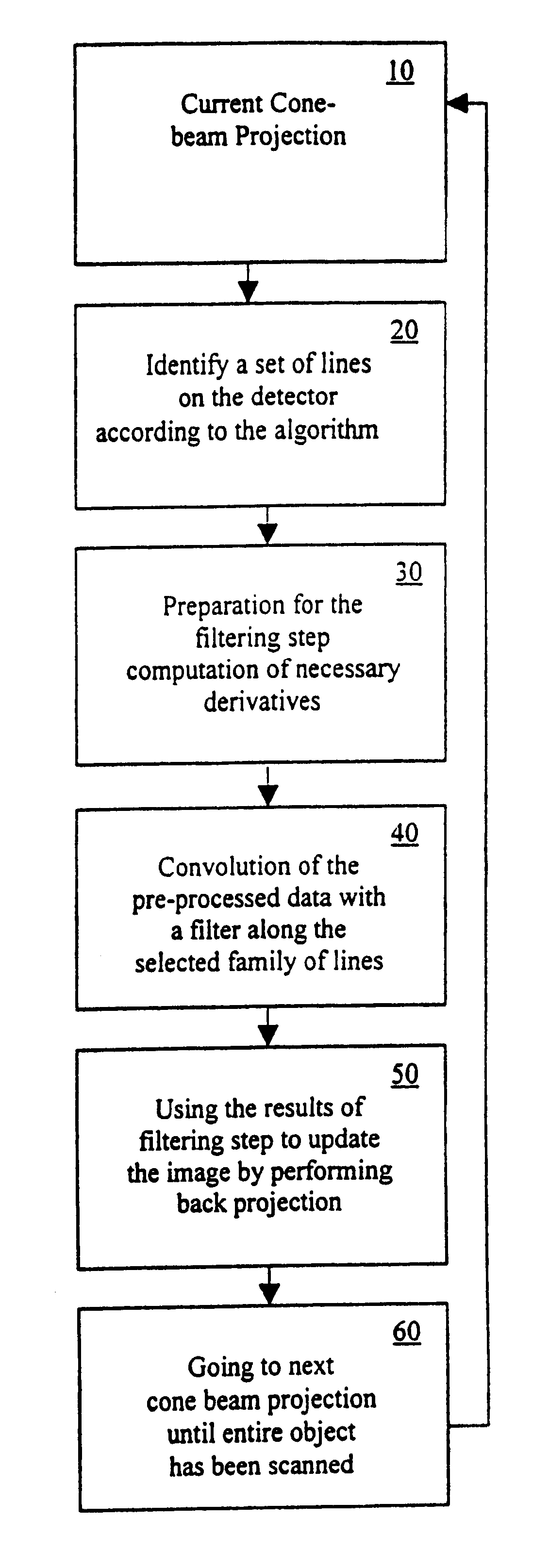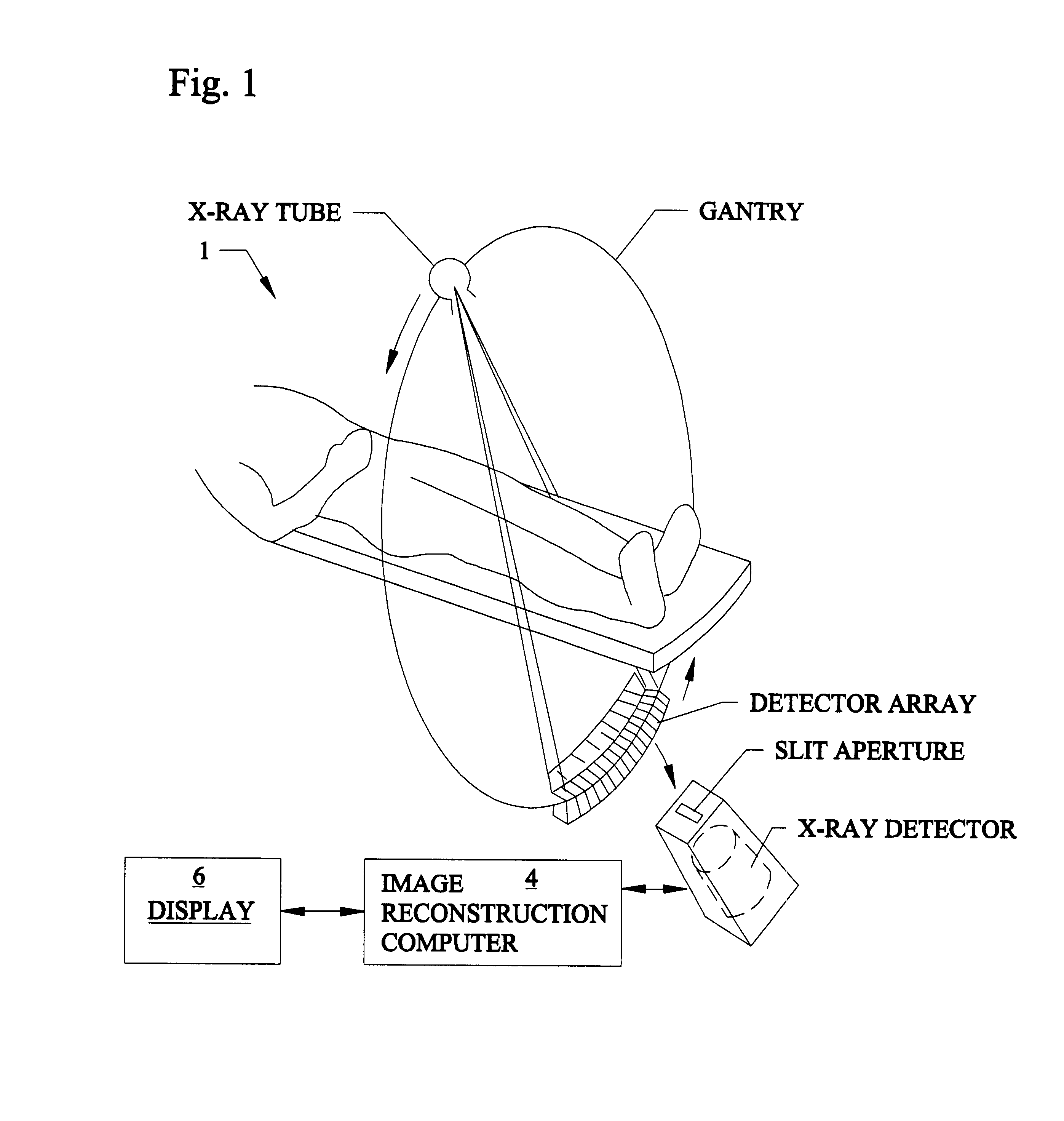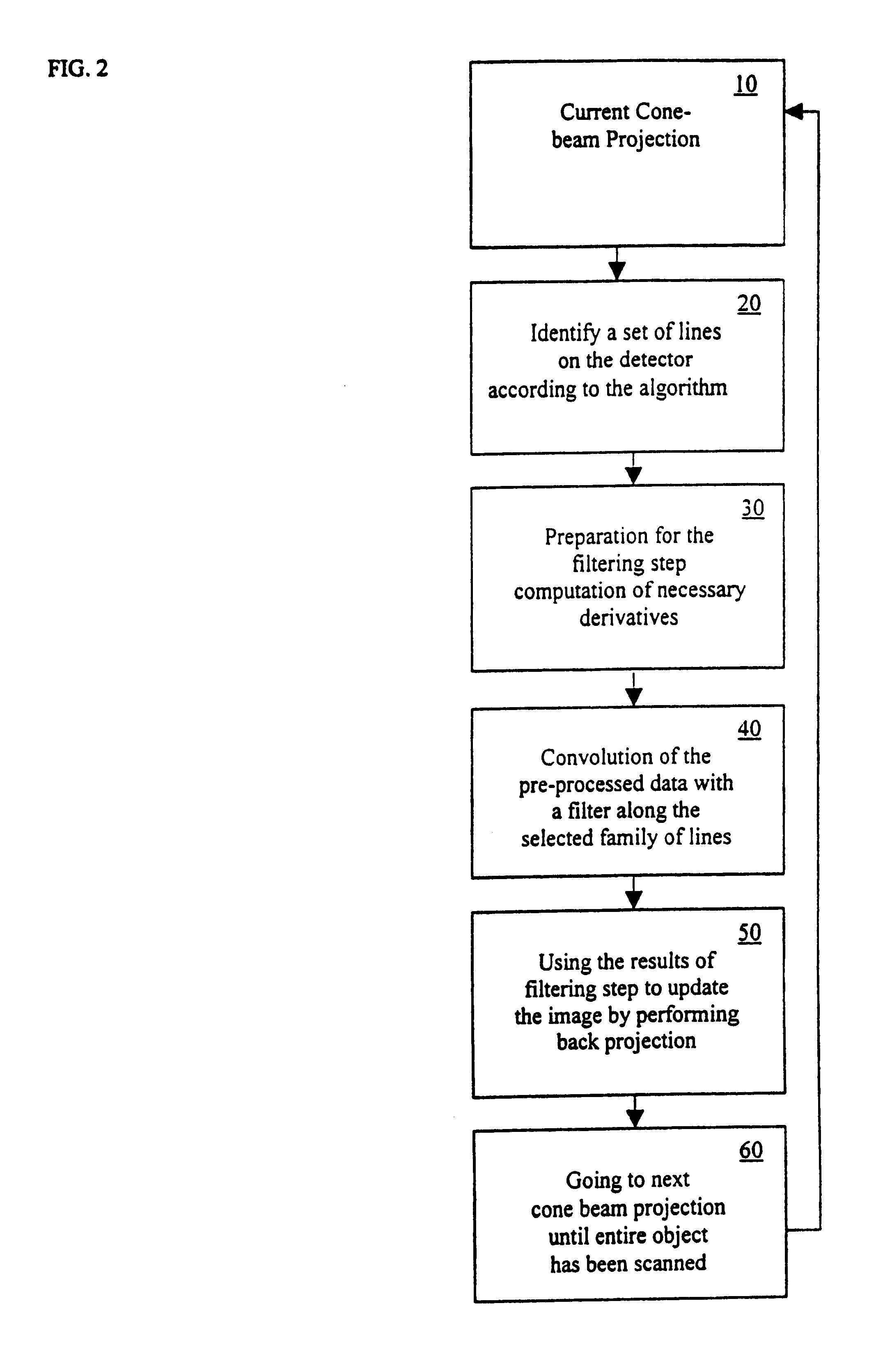Exact filtered back projection (FBP) algorithm for spiral computer tomography
- Summary
- Abstract
- Description
- Claims
- Application Information
AI Technical Summary
Benefits of technology
Problems solved by technology
Method used
Image
Examples
first embodiment
FIG. 2 shows an overview of the basic process steps of the invention that occur during the image reconstruction process occurring in the computer 4 using a
The first embodiment works with keeping several (approximately 2-4) CB projections in computer memory at a time and uses one family of lines.
In the first step 10, a current CB projection set is taken. The next step 20 identifies a set of lines on a virtual x-ray detector array according to the novel algorithm, which will be explained later in greater detail. In the given description of the algorithm it is assumed that the detector array is flat, so the selected line can be a straight tilted line across the array.
The next step 30 is the preparation for the filtering step, which includes computations of the necessary derivative of the CB projection data for the selected lines.
The next step 40 is the convolution of the computed derivative (the processed CB data) with a filter along lines from the selected family of lines. This step c...
embodiment two
For the second embodiment, one CB (cone beam) projection can be kept in memory at a time and, as before, only one family of lines on the detector is used. Now we describe the second embodiment of the invention in detail. Integrating by parts with respect to s in equation (10) we obtain an inversion formula in which all the derivatives are performed with respect to the angular variables. ##EQU8##
Here
.beta..sub.s =.differential..beta. / .differential.s;
e.sub.s =.differential.e / .differential.s, and
.gradient..sub.u D.sub.f denotes the derivative of D.sub.f with respect to the angular variables along the direction of the vector u: ##EQU9##
Comparing equation (10) and equation (17) we see that equation (17) admits absolutely analogous filtered back-projection implementation. Moreover, since no derivative with respect to the parameter along the spiral is present, there is never a need to keep more than one CB projection in computer memory at a time. Now we describe the algorithm in detail.
Ste...
embodiment three
For the third embodiment, two families of lines can be used in combination with either one CB projection in memory or with several CB projections in memory. We will first present the main reconstruction formula, and then describe the novel algorithm. Denote ##EQU16##
By construction, e.sub.1 (s,x) is a unit vector in the plane through y(s) and spanned by .beta.(s,x), y(s). Moreover, e.sub.1 (s,x).perp..beta.(s,x). Given y(s),s.epsilon.(s.sub.b (x),s.sub.t (x)), s(x), find s.sub.tan.epsilon.I.sub.PI (x),s.sub.tan.noteq.s, such that the plane through x,y(s), and y(s.sub.tan) is tangent to C.sub.PI (x) at y(s.sub.tan). This is equivalent to solving
[(x-y(s.sub.tan)).times.(x-y(s))].multidot.y(s.sub.tan)=0, s.sub.tan.noteq.s. (20)
Existence and uniqueness of the solution s.sub.tan.epsilon.I.sub.PI (x) to (20) is shown in A. Katsevich "Theoretically exact FBP-type inversion algorithm for Spiral CT", which is accepted in January 2002 for publication in the "SIAM Journal on Applied Mathematic...
PUM
 Login to View More
Login to View More Abstract
Description
Claims
Application Information
 Login to View More
Login to View More - R&D
- Intellectual Property
- Life Sciences
- Materials
- Tech Scout
- Unparalleled Data Quality
- Higher Quality Content
- 60% Fewer Hallucinations
Browse by: Latest US Patents, China's latest patents, Technical Efficacy Thesaurus, Application Domain, Technology Topic, Popular Technical Reports.
© 2025 PatSnap. All rights reserved.Legal|Privacy policy|Modern Slavery Act Transparency Statement|Sitemap|About US| Contact US: help@patsnap.com



